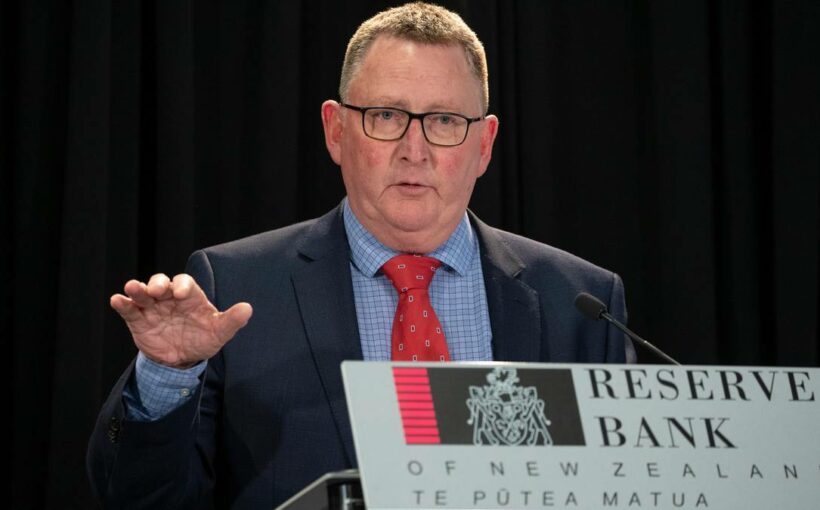OPINION:
The Reserve Bank has looked through New Zealand’s stronger-than-expected economic rebound- including its own rosier forecasts – to leave the official cash rate on hold and warn that “prolonged monetary stimulus” is needed.
For some – particularly those worried that the record low rate of 0.25 per cent is fuelling rapid house price inflation – this will seem pessimistic.
Sydney based Capital Economics, for example, takes the view that the economy will continue to surprise the RBNZ on the upside.
“We think the Bank will be persuaded to bring [bond buying] purchases to a complete stop later this year,” said economist Ben Udy.
But there’s a reason for the RBNZ’s cautious tone.
Global markets are champing at the bit to price in a Covid recovery – even though there is still enormous risk tied to the pandemic.
New Zealand’s relative success in managing Covid – as recognised in this week’s credit upgrades by S&P – has put us at the forefront of expectations for a return to normal monetary policy settings.
That has seen our dollar rise and our sharemarket fall back in the past few weeks.
The Reserve Bank is pushing back and takes the view that celebrating recovery too soon is a bigger risk than celebrating late.
It may yet raise rates sooner than many expected – but it is not about to give already bullish markets any hints.
The economic outlook ahead remained highly uncertain, determined in large part by any future health-related social restrictions, Orr said in today’s Monetary Policy Statement.
“This ongoing uncertainty is expected to constrain business investment and household spending growth.”
ASB chief economist Nick Tuffley described the statement as “an attempt to hose down some of the exuberance that has gripped global financial markets as vaccine roll-outs brought optimism that the pandemic will soon be put behind us”.
Orr talks about “retaining optionality”.
In other words, the RBNZ wants to retain the scope to add more stimulus if, for example, community outbreaks of Covid-19 get out of control.
Westpac chief economist Dominick Stephens puts it in more dramatic military terms.
“The RBNZ wants to see the whites of the eyes of inflation and employment before it shifts monetary policy,” he said.
It wants “to let things run for a while, and is prepared to wear occasional episodes of inflation rising to about 2 per cent in order to be sure that inflation and employment have returned to target sustainably”.
The Monetary Policy Committee agreed that inflation and employment would likely remain below its remit targets over the medium term in the absence of prolonged monetary stimulus.
The RBNZ now expects Inflation – currently below target at 1.4 per cent to peak at 2.5 per cent in mid-2021, largely due to Covid disruption.
It is then assumed to drop below target before “returning sustainably to around the 2 per cent target mid-point in 2023”.
Annual GDP growth is forecast to accelerate from late 2022, peaking at 3.8 per cent.
The unemployment rate is assumed to increase towards 5.2 per cent over 2021 “as activity in tourism-related industries continues to be weak and is not entirely offset by higher employment in other industries”.
But the rate is then assumed to gradually return to 4.6 per cent as economic activity recovers and capacity pressure begins to increase.
The base case also relies on continued fiscal support from Government with an assumption that $50 billion of the $62 billion Covid-19 response allocation is spent.
The RBNZ’s quantitative programme (Large Scale Asset Purchase [LSAP] Programme of up to $100 billion) and its Funding for Lending Programme (FLP) operation were also left unchanged.
“At face value, the dovish tone of the comments suggest that short-end yields have scope to go lower,” said ANZ chief economist Sharon Zollner.
But markets might just look through the gloomy language, she warned.
“The lack of firm dovish signal through forward guidance or OCR track, plus an upward sloping unconstrained OCR in 2022 has given conviction to market pricing and fuelled the NZD.
“Markets were always going to see what they wanted to see in today’s MPS. This is a market that is in a glass-half-full mood, not a glass-half-empty mood.”
There was no projected track provided for the OCR.
“We continue to expect the RBNZ will gingerly start lifting the OCR from August 2022,” said ASB’s Tuffley.
“That is 18 months away, which is an eternity in a time of heightened uncertainty.”
It would ultimately depend on factors such as the border opening up and confirmation that the RBNZ’s inflation and employment objectives are clearly on track to being met, he said.
Source: Read Full Article

/cloudfront-ap-southeast-2.images.arcpublishing.com/nzme/JTDDJCTJPQWU265JDPB4H4BPTM.jpg)